#Estefanía de los Santos
Text
The Coffee Table (15): Farcical Horror That’s Blacker Than Black.
#onemannsmovies #filmreview of The Coffee Table. #thecoffeetable. A jet-black comedy horror that disturbs but impresses. 4/5.
A One Mann’s Movies review of “The Coffee Table” (2022).
Original title: La mesita del comedor.
In a world of bland Hollywood cookie-cutter horror films (“Baghead”, “Tarot”, “Imaginary”, yada, yada, yada…), “The Coffee Table” is refreshingly different. Gone are the jump scares. But it is far more horrific and tense than anything I’ve watched this year.
Bob the Movie Man Rating:
Plot…

View On WordPress
#TheCoffeeTable#bob-the-movie-man#bobthemovieman#Caye Casas#Cinema#Claudia Riera#Cristina Borobia#Cristina Dilla#David Pareja#Eduardo Antuña#Estefanía de los Santos#Film#film review#Gala Flores#Josep Maria Riera#Movie#Movie Review#One Man&039;s Movies#One Mann&039;s Movies#onemannsmovies#onemansmovies#Review
0 notes
Text
THE COFFEE TABLE - Review
AKA - La Mesita del Comedor
DISTRIBUTOR: Cinephobia Releasing
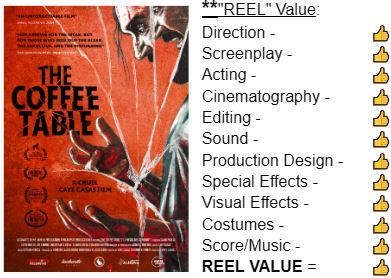
SYNOPSIS: In the midst of their loving relationship, Jesús and Maria welcomed their child into the world. As they settled into their new apartment, Maria assumed control over most decisions, including the decoration. During a visit to a furniture store, Jesús asserted his will by selecting a gaudy coffee table, resembling Liberace's misguided venture into Ikea. Maria argues with the salesman, particularly regarding the price and his claims of an "unbreakable" glass top, but Jesús gets his small victory and purchases the coffee table. After bringing the table home and trying to assemble it, Jesús is faced with a screw missing. While he waits for the salesman to deliver the missing piece, Maria heads to the market to purchase groceries for lunch with Jesús's brother and his girlfriend, leaving him alone with their baby. As they go about their day they are unaware that this extravagant, seemingly inconsequential coffee table would be the catalyst for everyone’s horrifying nightmare.
REVIEW: In THE COFFEE TABLE, Caye Casas skillfully merges Hitchcock's mastery of visual perception and David Fincher's climactic tension-building from "Seven," resulting in an immersive and unrelenting cinematic experience. Casas audaciously sustains a dire scenario throughout a grueling 90-minute runtime, crafting a relentless narrative that captivates and unsettles viewers.
The screenplay skillfully constructs the character's arcs through their interactions, adding depth and complexity. The sound design is effectively used to stimulate the viewer's imagination when tragic events occur off-screen. The limited perspectives revealed build suspense and tension as the drama unfolds. A dynamic is established between Jesús and Maria, allowing the viewer to experience the tension before her reintroduction to the apartment after the tragedy. Their intensified interactions, along with the introduction of Jesús's brother and girlfriend, hint at an unfortunate outcome. The viewer's melancholy, based on prior knowledge, mirrors Jesús' emotional state.
The film's climax surprised me, both in its intensity and its conclusion. Early in the story, we meet a 13-year-old character and her pet. As the narrative unfolded, I couldn't help but consider the potential implications of this relationship for the film's dramatic conclusion.
Earlier, I mentioned Hitchcock and Fincher while discussing Caye Casas. Casas is a masterful filmmaker who expertly blends elements from these virtuosos with his unique vision to create a distinctive style. His film excels in suspense and tension, skillfully crafted through framing and editing. Casas gradually builds the suspense, offering brief releases, only to heighten it further, leading the viewer to the brink of an explosive climax. However, instead of revealing the horrific outcome explicitly, he leaves the audience bewildered and provides a nuanced resolution through exposition, focusing on the emotional impact on the individuals involved. Much like great horror films, he plants the seeds of terror, leaving the power of imagination to work its magic. While not shunning gore entirely, he opts for implication rather than graphic depiction.
THE COFFEE TABLE features an exceptional cast. The actors deftly navigate a wide range of emotions, creating an intense and evocative journey. Their performances culminate in a sophisticated emotional crescendo, a harmonious convergence of diverse feelings that builds to a haunting climax. It's like the final chord of the Beatles' "A Day in the Life," leaving a lingering resonance. These are performances that linger in the memory, haunting and captivating in equal measure.
Caye Casas’ THE COFFEE TABLE is a harrowing and masterfully crafted story that takes viewers on an emotionally relentless journey. It's a cinematic experience that leaves an enduring emotional impact on the viewer. The narrative plunges a group of characters into a horrifying nightmare, creating a grueling and nerve-wracking experience..
The film is classified as a “horror comedy,” and while it does have some humorous moments in the opening scene, once the tragedy strikes, any attempts at dark comedy only heighten the overall terror of the story. Caye Casas, the remarkable filmmaker behind this movie, is definitely a name worth keeping an eye on for future projects.
CAST: David Pareja, Estefanía de los Santos, Josep Riera, Claudia Riera, Eduardo Antuña.
CREW: Director/Screenplay/Editor - Caye Casas; Screenplay - Cristina Borobia; Producer - Norbert Llaràs; Cinematographer - Alberto Morago; Score - Bambikina; Production Designer - Cristina Borobia; Costume Designer - Maria Márquez.
OFFICIAL: cinephobiareleasing.com/film/the-coffee-table/
FACEBOOK: www.facebook.com/cinephobiareleasing
RELEASE DATE: Laemmle Glendale, LA Apr. 19th, followed by New York, Austin, Chicago, & on VOD & DVD May 14th, 2024
TWITTER: twitter.com/cinephobiar
**Until we can all head back into the theaters our “COVID Reel Value” will be similar to how you rate a film on digital platforms - 👍 (Like), 👌 (It’s just okay), or 👎 (Dislike)
Reviewed by Joseph B Mauceri
#film review#movie review#THE COFFEE TABLE#La mesita del comedor#cinephobia releasing#caye casas#Cristina Borobia#david pareja#Estefanía de los Santos#horror#dark comedy#terrifying#joseph b mauceri#joseph mauceri
1 note
·
View note
Text
The Coffee Table
There aren’t many things more innocuous and humdrum than the humble coffee table. Yet, somehow, Spanish director Caye Casas proves that even the most benign household object can be repurposed into a tool of horror.
This is what Jesús and María — a couple with a strained marriage and a new-born son — quickly discover in The Coffee Table (or La Mesita del Comedor). The salesman (played by Eduardo…
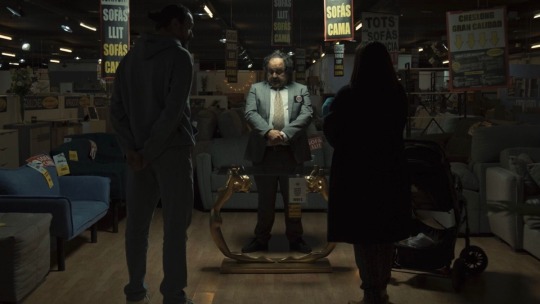
View On WordPress
#Black Comedy#Caye Casas#Comedy#David Pareja#Drama#Eduardo Antuña#Estefanía de los Santos#Horror#Tragicomedy
0 notes
Text
"The Coffee Table"
This unrelenting, bleak domestic drama with a sinister streak is one of the darkest films I have ever seen.
I just watched one of the darkest films I have ever seen, and that’s “The Coffee Table,” an unrelenting and bleak domestic drama that takes an incredibly sinister turn. This film pushes the envelope with an in-your-face 180 degree turn, and it’s one that’s absolutely not for the faint of heart.
Jesus (David Pareja) is tired of his wife Maria (Estefanía de los Santos) always calling the shots.…

View On WordPress
#Caye Casas#Claudia Riera#Cristina Borobia#David Pareja#Estefanía de los Santos#Fantastic Fest#Josep Maria Riera
0 notes
Text
Movie Review: The Coffee Table is disturbing, sinister and exquisitely uncomfortable
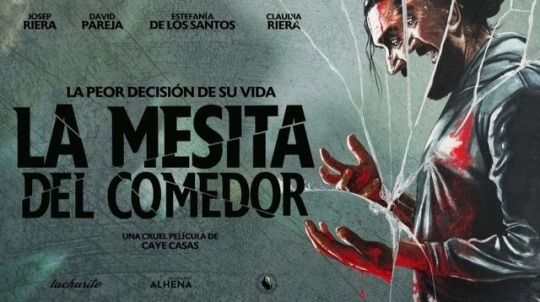
Independent films usually have limited releases in movie theaters, their filmmakers present them at festivals to publicize their work, which are subject to the scrutiny of very demanding critics who look for that detail that makes them stand out among the others and earn them awards. a prize.
Many of these productions made in many countries are destined to end up in home formats or as filler for some platform, but what about those that win awards and that are liked by locals and strangers or by more general public, this may transcend and his creative team has more work in other types of work or that nothing happens and it is just the novelty of the moment while the big studios spend millions of dollars on guaranteed failures.
To be honest, this can be seen as something very unfair because we have an idea and carry it out with good results, but nothing happens, especially for all those who were involved in that entire process, we tend to criticize in a bad way without knowing what is there. Behind the final result, it seems that from the outset this is doomed to failure and that only a few know about it and recommend it by word of mouth.
Spain is a country that has had very good film productions, great directors and actors have taken us to know stories in different genres, some very successful and others not so lucky that are forgotten, there is a director who has done what he has able with what he has had, the short films Nada S.A (2014). A Love Story (2015), I'm Sorry Honey (2015), It's Not What It Seems (2015), R.I.P (2017), ASYLUM: Twisted Horror and Fantasy Tales (2020) gave him the gateway to the world of cinema With Matar a Dios (2017) and The Coffee Table (2022), Caye Casas together with Albert Pintó have made interesting proposals in their stories, in their direction and their cinematography.
In a very punishing 2022 for the film industry came The Coffee Table, a project that is difficult to describe and has had its highest point in 2024, causing controversy and dividing opinions. The film has already been shown in different festivals with success putting its filmmakers on the right path to continue delivering such good works with a peculiar and sinister way of telling stories.
What is the movie about?
María (Estefanía de los Santos) and Jesús (David Pareja) have just become parents, but their relationship is not going through the best moment, this crisis has caused them to have more problems, what they cannot imagine even in their worst nightmares is what Buying a dining room table will become the worst decision of your lives.
Some works are characterized by being very peculiar, their vision may or may not be novel, they may or may not give us a good experience in a time of entertainment, and they may or may not involve us in their plot beyond what we think. and in the end, it may or may not leave us thinking about what we just saw and what relationship that has to something that has personally happened to us.
Having said the above, the Caye Casas The Coffee Table does this and more and here the question should be asked, how do you tell something without telling anything? We are in the era of the potential spoiler, some are in favor, others against, and others the only thing that matters is causing debate with the above, A few films cause an uncomfortable or unpleasant effect on the viewer, and some know a lot and also those who do not know anything about what they are going to see, I remember that this media phenomenon occurred with 3 films, The Blair Witch Project (1999), Paranormal Activity (2007) and A Quiet Place (2018) where the attendees of a movie theater got involved with what they were seeing, making this experience something strategically planned and novel.
We well know that an entire plot can develop from one idea that involves more subplots within a main one. Some are too elaborate and end up confusing us due to their lack of fluidity and because they want to tell everything in a very short time. Others are simple and easy to understand. See, how a fast and bold narrative that immediately puts us in context without us having to have any prior baggage, takes a moment and for a certain time shows us a series of events that end with a climate whether shocking or not. , the game of fortune telling and knowing in advance what is going to happen and how it is going to conclude has been very fashionable in recent years due to the lack of creativity of its filmmakers or the demands of the studios for wanting to earn more at the box office than by presenting something of quality.
The Coffee Table redefines itself as a dramatic thriller with overtones of horror and no, it is not about a table possessed by some demon or that it represents something paranormal, it is simply how they define it at the beginning:
"The "famous" Rörret coffee table with an unbreakable bronze tinted glass, a structure with an image of 2 beautiful ladies modeled in ivory and bathed in a perfect imitation of gold, a piece of Swedish design, so versatile that it can be used in the living room, in the bedroom or in any corner of the home where you want to give an elegant and designer look, with a terrible design and taste, it should be clarified, and it is intended to be the preferred table for having a coffee or an aperitif with our loved ones. , and he assures us that this table, due to its (awful) design and its level, will change our lives for the better and will bring us happiness at home."
The above could not be further from the truth, a charlatan salesman who would do and say anything to sell his shit to an unsuspecting person who wants to buy it, and from this moment on things are going to change radically and not change their lives for the better and bring happiness to the home, but on the contrary, this is going to turn their worst nightmare into something real and it must be clarified that as María, her protagonist, says, "nothing is unbreakable." That being said, this horrible table will be the one that sets It tests the characters and impacts us as an audience.
Many of us ask ourselves, how could a damn coffee table change my life for the worse? It is not the table in itself, it is everything that surrounds it, the tension of its characters that becomes increasingly deeper to the point where by an accident we verify that this unbreakable glass tinted in bronze causes a tragedy to a married couple in the that things are not going well at all, a husband who feels pressured by his partner who has already chosen everything, from the wedding day, what he and his mother will wear and even the decision to have a child and name him. Cayetano, which is the name of her grandfather, which he refers to as a tacky name, like a fascist bullfighter, and it is here that the first spark of black humor jumps when the seller mentions that he is also called Cayetano like his father, his grandfather, his great-great-grandfather and several more generations and the wife refers to this gentleman salesman as horrible and shabby like the little table, this already puts us in the context of what we are going to see later.

According to the reasoning and I agree that objects are very shabby, you have to treat them well and give them love, without a doubt one of the worst sales strategies, I have to say that while I saw that and listened to this monologue from the seller, I would have left before he ended up not buying the damn table and that the protagonist ends up buying out of pride, from this we move on to the opening credits that we see interspersed in the manual on how to assemble the table, following this we see the façade of the building, the protagonist raising the box and the presentation of the other characters, the neighbor (Cristina Dilla) who is the mother of a very unlovable 13-year-old girl named Ruth (Gala Flores) who continually threatens Jesús with incriminating him for pedophilia while he rejects her advances for confusing an act of kindness with a fictitious crush.
The plot continues and Jesús and María continue arguing over the name of the child and other trifles that is when he notices that a screw is missing to be able to finish assembling the table and calls Cayetano to ask him to replace the missing one while talking to him he places the glass face up a detail that will take on vital importance, then María goes out to do some shopping to receive a visit from Carlos (Josep Maria Riera), Jesús's brother, and his wife Christina (Claudia Riera), leaving Jesús alone with the baby, the Father tries, by all means, to stop him from crying, up to this point everything seems to be going normally until in a shot that we do not see and with the camera fixed we hear a stumble, a blow, a glass breaking despite the seller's promise to decapitate the baby.
The above is an act that we never see explicitly, we only see flying glass and something that falls under the chair that we assume and later they confirm that it is the head of little Cayetano in a masterful and cinematically well-realized shot and only 19 minutes have passed. minutes of the 91 minutes that the film lasts, from this moment on things will begin to take a sinister and terrifying turn for the protagonists and for us as viewers, since we know that it was an accident we ask ourselves the question: how can we explain what would have happened if we were in Jesus' place? the tension level goes from zero to one hundred in a matter of seconds, then the scene follows where we see what happened, the table, the broken glass, blood on the carpet, and the small headless body while a children's song plays.
The shots, the shots, and the cinematography from this fact do not show the cruelest moments, nothing is revealed in everything that refers to this, it is off-camera and it is up to the viewer to structure everything else in his mind. , this is undoubtedly planned and done premeditated because what the director seeks is for us as an audience to get 100 percent involved with the plot and the characters, everything here turns out to be unfair, cruel, and hard enough to face, in At this point it is no longer necessary nor is it necessary to graphically show what has happened and what is going to happen and as an audience we are a little more immersive, more empathetic, more pimped with what we are seeing, thinking and feeling, a discomfort that each of us will know how to drive.
Talking more about what happens would be difficult to explain, it is each one who in the end will realize if what happened could happen to any of us or not if it has an extremist ending where all the subplots that have been handled In the script written by Cristina Borobia and Caye Casas himself, they succumb to an equally disturbing and uncomfortable fact, the handling of the information they have while there are visitors at home and María finds out what happened due to the insistence of Ruth's inflammable falsely accuse Jesus and his wife of having kissed her in the elevator of the building, and that everyone presents faces something unexpected and this ends abruptly with the brother in shock and inside a patrol car babbling things that make no sense to the others but that we We understand perfectly without him stopping to repeat, "the little dining room table" while in parallel we are told what happened to Mary and Jesus that a tragedy gives rise to a greater one.
An unexpected closure in which we can already have the complete panorama and understand the reason for some shots that take on a singular and vital importance for everything else, at first we saw the building and the balconies, then how Jesus places the glass while he is assembling the table, we see that everything is going towards the same point where there will be a crossroads of all those small but very important stories as well as the development that each of the characters is having, we can appreciate the changes in mood, the fear, anguish, horror and we can assume that none of us, not even us, are prepared or can even think of something coherent that could happen so that all this can be understood and a solution can be found.
We are faced with a Spanish dramatic thriller that offers us a simple but impactful proposal, a plot that develops with solvency in itself and drags us along with it to a very miserable point, risking everything for everything in favor of the script in which the Circumstances turn harmless dialogues into something deeper and more horrible that goes from the disagreement of buying the damn table to a simple interaction between María and a man in the supermarket who asks her about wine, every word that is exchanged is strategically planned to be ironic, sarcastic, in bad taste but never something comforting.
It is here where we have revealed what the secret of success is in this film that confuses us due to its title and its advertising and this is that in itself it manipulates feelings and ideas by making its characters express their deepest emotions in a way that is too every day, we see horror coming because it is directly linked to the unknown that here is neither ethereal nor otherworldly nor are there serial killers or demons, or paranormal things, it is simply that an accident has occurred with devastating consequences that give way to something even more big and even more devastating.
The fear that Casas handles seems so recognizable to us, so innately human that allowing us as the audience to be the ones to know this terrible secret before any of the other characters is an experience that has very rarely been carried so well and to this level in cinema. If we talk about large productions, it is seen and many times proven that less is more, that it is those simple things that show that creativity can have no limits and present things like this without having to resort to easy scares or structured special effects with CGI or to confuse us as an audience that we have to overthink things, no no, here everything is suggested and direct.
It must be recognized that Caye Casas's cinema does not mess around or waste time with long and meaningless scenes, nor does it come to educate us with moral messages that love conquers everything, it is just that his cinema is like that, direct, crude, cruel, who can laugh at himself out loud and then take you to the limit with a fear of the horror that you must face, his personal and very successful touch is to make us feel uncomfortable, give us a bad time but at the same time have a good time With this and here we ask ourselves, why feel this way if the purpose of cinema is to entertain and make us have pleasant times? The answer to this could be so simple to say, let whoever wants to see it and that's it, but that's not the case, there is also the fact of seeing something that breaks with everything traditional to which we are already accustomed, that breaks those paradigms that they impose and with which we "must" entertain ourselves and accept that cinema has changed and evolved by rethinking its own rules and woe to those who want to break them because it will surely be a failure.
Having said the above, perhaps there is a specific audience for this type of production that better understands what the filmmakers want to tell us and not a more general audience that only seeks to have a good time, that is not going to happen here, this is a work in The one where we want time to go faster and tell us what is happening, what they are doing, what they will do, how it will all end and this need for this to happen like this and so quickly is because it makes us feel uncomfortable. because we begin to overthink things that have nothing to do with the plot of the film but with our plot and history and it plays with us to do that sinister exercise of searching in the recesses of our mind for that dark secret, that thing that we made of which no one found out or whether it was on the contrary reliving the consequences of that or leaving undefeated to this day, maintaining it that way and pretending to everyone that although we are not perfect we have an image to take care of that we invented from that.
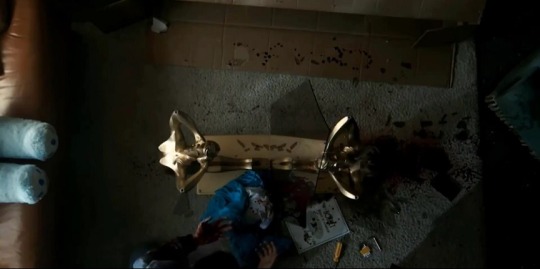
It is so uncomfortable that Casas puts us in the situation of the father or mother and asks us what we would have done in their place, perhaps this is a shameless mockery of all those films that do the same thing without even having a vestige of what is here. It turns out, and best of all, it leaves us with the implicit morbidity of wanting to see on another, more direct level what happened, to see how he stumbled and how the baby ended up decapitated, to see the body and head separated, to see what It happens at the end and I don't doubt that they are already setting their eyes on this either to take the idea and make it a more concrete remake or to copy and imitate this style but at once we can guess that no one could do it better than what they have done. made its director, it would not have the same effect because we already know what is happening, we already imagine it in the most atrocious ways, and seeing it explicitly would only satisfy that morbid curiosity that we have as spectators and that current cinema has left us.
The same film suggests to us that even for a moment we are going to have a bad time. We perfectly accept and are aware of the disturbing situation in which we are placed as a spectator and this happens when we begin to empathize with its protagonist, whether we like it or not, we understand what has happened. past and make us complicit in an imaginary crime but one that carries a lot of truth in the things that happen in the real world.
We cannot say that after having seen all this Casas is not a genius or a director who promises a lot and has everything to succeed as long as he remains faithful to his style, we cannot say that this type of work is the most common and that Anyone can do it, nor can we deny the genius with which it is narrated and the effect that this has on us and this is what modern and current cinema was missing, a watershed between what can and is allowed to be done with a very limited budget. and whatnot, but above all, select your audience very well and who you can reach.
The cast is made up of David Pareja, Estefanía de los Santos, Josep Maria Riera, Claudia Riera, Eduardo Antuña, Gala Flores, Cristina Dilla, and Itziar Castro who do a spectacular job, understand their characters perfectly well and develop them to the level of what they the plot requires.
The music composed by Esther Méndez (Bambikina) has simple chords that range from childish and simple to pieces that increase tension and suspense, chords that achieve symmetry between what we see and hear, a very good work that is at the level of what is required.
In conclusion, The Coffee Table is a film that has rarely been seen, which makes us think that independent cinema has much more to offer and that this is where the future of cinema in this and other genres may lie. a work that marks a before and after, demonstrating that something bigger can come from a small and simple idea. Congratulations to its director and its entire creative team for giving us a clear and direct example that less is more.
The Coffee Table is now available on the Prime Video platform.
https://www.youtube.com/watch?v=oB1lTSxB2j4
Read the full article
0 notes
Text
THE COFFEE TABLE MOVIE review - A roller coaster ride of emotions that you won’t want to miss!
Director: Caye CasasWriters: Cristina Borobia and Caye CasasStarring: David Pareja, Estefanía de los Santos, Josep Maria Riera, Claudia Riera, and Eduardo AntuñaMovie Length: 1 hour 30 minutes
What it’s about: The Coffee Table is about a couple, Jesus and Maria, who appear to be in a rut with their marriage while dealing with their first and newborn child. When Jesus randomly decides to purchase…

View On WordPress
0 notes
Text
Cañar 23 años como Capital Arqueológica y Cultural del Ecuador

El Gobierno Autónomo Descentralizado Intercultural del cantón Cañar con la sesión solemne conmemoró los 23 años de declaratoria como Cañar Capital Arqueológica y Cultural del Ecuador que se cumple cada 26 de enero. El evento contó con la participación del alcalde Segundo Yugsi, vicealcaldesa Adriana Naula, Concejales, y autoridades provinciales, cantonales y parroquiales.
En el acto solemne se dio a conocer los comunicados enviados por las autoridades nacionales y provinciales, instituciones públicas y privadas, quienes se hicieron presentes con un saludo reverente a la tierra cañarí por su enorme riqueza arqueológica, histórica, tradición y cultura viva en honor a su declaratoria.
En su discurso de orden el alcalde Segundo Yugsi manifestó que la diversidad cultural, la interculturalidad y la magia simbólica que emanan de Cañar son aspectos que nos enorgullecen y definen nuestra identidad. “Hoy nos reunimos con gran regocijo para conmemorar los 23 años de la declaratoria de Cañar como Capital Arqueológica y Cultural del Ecuador. Este reconocimiento, otorgado un 26 de enero de 2001, constituye un tributo a la destacada presencia de los testimonios históricos, arqueológicos, y de la cultura viva de los cañaris, posicionando a nuestra ciudad y provincia como el epicentro de la arqueología del país”, dijo.
Se otorgó preseas y menciones honorificas que buscan identificar, discernir, estimular y premiar las acciones de instituciones y personas orientadas al buen vivir; en procura de resaltar los valores de la sociedad cañarí, se concedió los siguientes reconocimientos:
Condecoración a la mención “Capital Arqueológica y Cultural del Ecuador” por haber contribuido con la restauración arquitectónica de los inmuebles históricos que se encuentran dentro del inventario del Instituto de Patrimonio Cultural de la Nación, al señor José Gilberto Maniato Santos.
Condecoración a la mención “Gobierno Autónomo Descentralizado Intercultural de Cañar” por su destacada labor demostrada durante su actividad diaria, en sus planes y programas, acciones que han promovido actividades amigables con la naturaleza, cumpliendo y apoyando a que se respete y reconozca los derechos que hoy la naturaleza tiene consagrados en la Constitución, a las siguientes personas: María Chimborazo Calle, Carmen Siguencia Maldonado, Unidad Educativa San José de Calasanz.
Condecoración a la mención “CAÑAR DUMAC” por su destacada labor demostrada durante su actividad diaria, demostrando reivindicaciones justas en favor de sus miembros y la sociedad en general, sin claudicar sus principios en pro de un verdadero Sumak Kawsay, a las siguientes personas: Gilberto Loja Caguana, Alfonso Siguencia, Manuel Allaico Camas.
Condecoración a la mención “Sr. Rudecindo Inga Vélez” se otorga a aquellas instituciones o personas que se han destacado en el campo de las artes y la música mediante la cual se promueva las costumbres y tradiciones de nuestro pueblo, a la Mama Danza Cañari de la parroquia De Zhud, Chontamarca y General Morales; y a la Banda Musical San José de la Tranca.
Condecoración a la mención “Gobierno Autónomo Descentralizado Intercultural de Cañar” se otorgó a las personas o grupos que demuestran mediante la elaboración, utilización y promoción de los diversos, productos, materiales e instrumentos artesanales, la riqueza cultural e intelectual manifiesta en sus destrezas y habilidades, a las siguientes personas Rosa Ochoa Andrade, Edgar Hermida Martínez, Santos Velásquez Ordoñez.
El Concejo Municipal del cantón Cañar, confiere los siguientes reconocimientos a las señoritas Karen Doménica Calle Saeteros y Diana Estefanía Lazo Mainato por la valiosa labor humanitaria y social desempeñada en el territorio cantonal, en cada evento desarrollado, engalanó con su presencia durante su representación como Reina y Ñusta Capital Arqueológica y Cultural del Ecuador, período 2023-2024; legado digno de admirar y felicitar en esta fecha de vital importancia.
También, se llevó a cabo la firma de importantes convenios con la Empresa Electro Generadora del Austro Elecaustro S.A.; Empresa Eléctrica Regional Centrosur; y Ministerio de Inclusión Económica y Social.
Además, se presentó el video en honor a la Declaratoria de Capital Arqueológica y Cultural del Ecuador y la Marca Institucional para el Bicentenario.
Read the full article
0 notes
Photo

Anoche, el trabajador social, líder político y próximo senador de Dajabón, Salvador Holguín, expresó su solidaridad y más sentido pésame a los familiares y amigos de Estefanía Mom Premier quien falleció mientras daba a luz. La ambulancia de Holguín trasladó desde Santo Domingo hasta el municipio Loma de Cabrera en la provincia Dajabón, el cuerpo sin vida de la joven para darle cristiana sepultura. @salvadorholguin @noticiasdajabon044 #dajabon @mariotorresb_ @prm_oficial @luisabinader @jose_paliza @raquelpenavice @lomadecabreraoficial @la.roka25 https://www.instagram.com/p/Ci-ZYIbOpES/?igshid=NGJjMDIxMWI=
0 notes
Text
¡Ay, mi Madre! (2019)

It’s been a while since I’ve seen a movie that stopped caring like ¡Ay, mi Madre!. Even if the ending had been satisfactory, this movie is neither funny nor charming and it both feels and looks cheap. Only the most demented and determined movie viewers would consider not shutting it off minutes in.
Following the sudden death of her mother, María (Estefanía de los Santos) returns home to organize the funeral. The familiar scenery reminds her of what she’s been missing… and what she ran away from. Her cousin Segundo (Secun de la Rosa) is madly in love with her while her old flame (Francisco Javier Cano) has become a man of the cloth. Complicating things is the deceased’s will. To earn her inheritance, María has a month to get married and become pregnant.
I don’t know how it is in Spain but in Canada, cousins potentially hooking up is gross and creepy. It’s even more awkward when you realize how long it’s been since they've seen each other. Within minutes, a chilling thought floods your mind and paralyzes you with terror, “Is this movie bad enough to make you think we’re going to buy a love triangle between María, Segundo and the priest?”
Between the dead-on-arrival punchlines, we suffer through irritating side characters and a plot so thin and unimaginative you’ll be instantly bored. Reprieve only arrives once your boredom loops around and you begin fantasizing. Either about what the talentless writer/director Frank Ariza might try to pull next or about the way it could suddenly become awesome. María’s mother (Caty Callado) comes back as a ghost with what I think is supposed to be helpful advice. Wouldn’t it be better if everyone died in a sudden volcanic eruption?
Ay, mi Madre! is mercifully short, which is the only good thing about it. The performances are sub-par all around and the actors entirely devoid of charisma. Estefanía de los Santos is particularly good at draining the energy of everyone around her - including the audience. We're told in great detail how much men lust after her character - either because of some perverse desire to have mutant children or because they think her beautiful. You never believe it because… let’s put it this way. You cast Scarlett Johansson as a meek waitress in a trashy dinner and you wouldn’t buy it because she’s too good-looking. This is the mirror opposite. Maybe if she had a great personality but nothing and no one is charming in !Ay, mi Madre!.
And then… we get to the end. Or rather, the non-end. You blink and suddenly, the plot's resolved and the credits are rolling. Did someone die before critical scenes could be shot? It confirms this cinematic abomination as an even bigger waste of time than you believed. Even the end credits are badly done, with the text flowing over a background that makes them difficult to read. It’s wholly irredeemable garbage. (Original Spanish with English subtitles, November 1, 2019)

#¡Ay mi Madre!#¡AymiMadre!#movies#films#reviews#movie reviews#film reviews#frank ariza#Estefanía de los Santos#secun de la rosa#Terele Pávez#spanish movies#spanish films#2019 movies#2019 films
1 note
·
View note
Text
Tentang Proyek Euler.Tools
Euler Tools adalah platform untuk mengeksplorasi dan menemukan konten blockchain. Dengan antarmuka yang bersih, dapat digunakan, dan responsif.Teknologi kami mengekstrak data langsung dari blockchain dan menggabungkannya dengan berbagai sumber untuk memberi Anda semua alat dan informasi yang Anda butuhkan di satu tempat.

#euler #bsc #crypto
Tentang Alat Euler
Moto Euler Tools adalah Penjelasan Blockchain. Kami ingin membawa blockchain ke orang-orang. Misi kami adalah menyediakan seperangkat alat yang Anda
keluarga, teman, dan klien, dapat digunakan dengan aman untuk mengakses blockchain, melihatnya dengan transparansi penuh, memverifikasi setiap sumber informasi, dan mendapatkan manfaat dari teknologi ini yang telah membentuk kembali dunia kita. Langkah pertama kami adalah seperangkat alat visualisasi yang membaca data langsung dari blockchain dan beberapa sumber lain dan memprosesnya. Kami mengintegrasikan alat dan fitur yang disediakan oleh lusinan layanan ke dalam satu perangkat lengkap. Melalui ini, kami ingin menjadi metaoracle — Tempat untuk memeriksa informasi apa pun yang terkait dengan blockchain. Tapi ini baru permulaan: Kami juga berencana untuk membangun sumber daya pendidikan dan alat interaktif untuk memanfaatkan teknologi blockchain dan meningkatkan aksesibilitasnya oleh khalayak arus utama dan dunia keuangan dan perusahaan off-chain.
Fitur

Harga Real Time & Data Pool
Jelajahi pasangan di antara beberapa bursa, dapatkan grafik harga yang diperbarui secara real time dan konfigurasikan sesuai keinginan.
Token Petir & Penjelajah Proyek
Periksa distribusi dompet token, pertukaran, kapitalisasi pasar, analisis sentimen, dan dapatkan semua informasi tentang proyeknya (berita, tim, verifikasi kontrak…)
Dompet Lightning & Sistem Portofolio
Lacak semua dompet dan transaksi Anda di satu tempat. Anda juga dapat melacak dompet dari pedagang lain dan menyalin operasi mereka.
Pemberitahuan Waktu Nyata Petir
Dapatkan pemberitahuan di setiap saluran yang Anda inginkan (telegram, sms, email, browser...) dan konfigurasikan sistem peringatan untuk memperingatkan Anda tentang rugpull, pengurasan likuiditas, dan
TINGKAT HARGA
Pilih tingkat langganan Anda!

Euler.Tools, Platform Unik untuk Menjelajah dan Menemukan Alat Blockchain

JUMPA PERS

JUMPA PERS. Jorge de los Santos adalah orang di belakang Euler.Tools, sebuah platform yang ingin mengubah cara orang menganalisis industri blockchain dengan memberikan pandangan menyeluruh tentang yang dipasangkan dengan antarmuka yang mudah digunakan.
Mirip dengan ahli matematika legendaris dan senama proyek Leonard Euler, yang memecahkan teori dan memecahkan masalah jembatan Königsberg, Euler.Alat bertujuan untuk membuat metode untuk menavigasi yang kompleks. Euler.Tools membantu pengguna menemukan cara paling efisien bagi pengguna untuk menavigasi teknologi blockchain menggunakan alat pendidikan dan interaktif.
Pedagang harus menggunakan platform yang berbeda karena masing-masing menyediakan data dan penawaran yang berbeda. Euler.Tools memecahkan ini dengan menawarkan kepada pengguna 10 alat yang berbeda yang mendukung pedagang untuk memeriksa silang aktivitas on-chain, aksi harga, dan data titik lainnya untuk melakukan perdagangan yang lebih terinformasi.
Euler.Tools menawarkan kombinasi dari semua perangkat populer dalam satu antarmuka, membuat teknologi dan aktivitas blockchain mudah dijangkau.
Jadi Euler.Tools mengintegrasikan DeFi, blockchain, dan data dunia nyata dalam satu antarmuka, didukung oleh seperangkat alat yang membantu pelaku kripto mendapatkan informasi yang membantu mereka dalam aktivitas perdagangan mereka. Pikirkan TradingView, Chartx, DEXools, BscScan, dan PancakeSwap yang digabungkan dalam satu platform.
Euler.Tools memiliki integrasi dengan BscScan dan TradingView, memastikan bahwa pengguna bisa mendapatkan informasi yang relevan dalam satu platform. Juga, Euler.Tools menyediakan antarmuka yang ditingkatkan untuk desentralisasi pertukaran populer Uniswap serta Oracle Chainlink dan grafik node yang mendukung sendiri.
Proses pemikiran di balik Euler.Tools memastikan aksesibilitas yang mudah ke alat analisis oleh pengguna akhir.
Proses yang sepenuhnya otomatis
Euler.Tools berbeda dari alat lain yang ada karena mengintegrasikan proses yang sepenuhnya otomatis untuk operasi. sebagian besar alat analitik memeriksa kontrak tunggal untuk operasi dan biasanya memerlukan informasi untuk ditambahkan secara manual agar tetap dibuat.
Euler.Tools akan mengotomatiskan proses dengan menggunakan blockchain formal dan memproses data teknik dan metodologi yang dikenal yang digunakan oleh perusahaan penawaran data di seluruh dunia. Selain itu, Euler.Tools mengintegrasikan parameter baru yang berbeda dari alat yang ada.
Misalnya saat alat lain fokus pada nilai yang disimpan dalam kontrak Uniswap, Euler. Alat perbandingan dampak token swap pada likuiditas, ketersediaan, profitabilitas, biaya gas, dan peristiwa lain yang dapat dipicu oleh token swap.
Berbagai alat dan model berlangganan yang unik
Euler.Tools menawarkan pilihan blok yang kuat dan dapat disesuaikan dengan alat pertukaran terdesentralisasi yang menawarkan banyak fitur, termasuk.
Bandingkan token, periksa volume, alamat, pemegang, dan tingkat pencetakan/pembakaran
Buat peringatan tentang harga dan acara, atau dapatkan pemberitahuan tentang tarikan karpet yang mungkin memengaruhi aset Anda
semua dompet Anda ke satu antarmuka dan dapatkan data yang diperkaya
Jelajahi pasangan apa pun, atau buat pasangan Anda sendiri
Buat kueri kompleks pada data besar
Semua fitur ini dibuat menggunakan kombinasi teknologi ETL, Data Pipelines, dan Machine Learning untuk menyaring dan membersihkan hasil dan hanya menghadirkan peristiwa yang relevan.
Untuk memastikan bahwa setiap orang memiliki akses ke alat tersebut, Euler.Tools sedang meneliti tiga model berlangganan. Model pertama menggunakan sistem hold-only di mana pengguna dapat menghubungkan dompet dengan token asli EULER dan membuka blokir akses ke model gratis.
Pengguna akan dikenakan biaya untuk fitur tambahan yang mereka anggap penting, lebih seperti model freemium. Meskipun ada sistem tiering, pengguna membayar jumlah yang tetap untuk mengakses fitur tertentu, mulai dari manajemen bot telegram yang mengirimkan pemberitahuan portofolio penarikan karpet.
metode berlangganan ketiga adalah model pembayaran yang dirancang untuk perusahaan besar yang membutuhkan data besar. Langganan ini menawarkan kunci api lengkap untuk berinteraksi dengan alat yang ditawarkan oleh Euler.Tools.
Euler.Tools didukung oleh Euler Token
Euler.Tools didukung oleh token BEP20 dengan ticker EULER. Token ini dirancang untuk menyediakan produk investasi deflasi yang aman dan mekanisme pembelian kembali yang mengumpulkan nilai bagi penjual.
Token Euler akan digunakan untuk membayar aplikasi dalam ekosistem Euler.Tools, ini termasuk blok DEX, kueri data besar, perlindungan portofolio, dan antarmuka perdagangan.
Euler.Tools telah mengembangkan kumpulan penambangan sederhana yang akan memberi insentif kepada pemegang token saat produk dikembangkan dan model yang diperkenalkan diperkenalkan. Juga, model berlangganan berfungsi sebagai mekanisme pembelian kembali yang dirancang untuk membakar dan mengurangi jumlah pasokan yang beredar.
Ini akan menciptakan harga deflasi yang stabil bagi pemegang token sambil mempertahankan ketersediaan token. token EULER dapat mengakses pemegang manfaat tambahan dengan menyediakan likuiditas. Juga, token yang mendukung pengguna untuk mengakses fungsionalitas dasar di platform.
$EULER TOKEN
Token $EULER memberikan akses ke manfaat tambahan di dalam Alat Euler.
$EULER adalah utilitas token BEP20 yang memungkinkan akses ke fitur premium alat kami.
Setiap transaksi $EULER membakar 1% dari jumlah tersebut, menciptakan kenaikan harga yang stabil.
Pemegang memiliki manfaat tambahan, termasuk akses gratis ke fitur premium dan bagian bulanan dari biaya berlangganan.
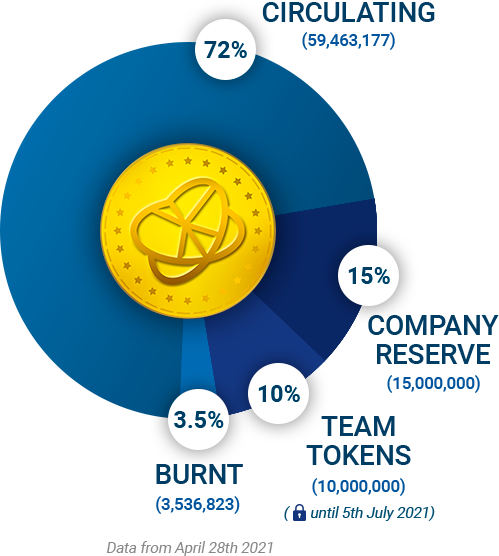
NAMA TOKEN: EULER
KONTRAK: BSCSCAN
JENIS: BEP20
JUMLAH: 92.801.069
BEREDAR: 51.597.701
TERBAKAR: 7.198.930
PETA JALAN

TIM
Tim veteran yang diisi dengan pengembang berpengalaman, berkomitmen untuk menciptakan perangkat canggih.
Lebih banyak anggota tim akan segera diumumkan...
Jorge DLS: CEO & Pendiri
Eduardo E: CFO
Doruk T: CMO
Nico A: Desainer Grafis & Pencipta Merek
Agustin G: Frontend Lead
Eric M: Pengembang Frontend
Estefanía R: Desainer UX/UI
PENASIHAT
Javier B: Tokenomics
Victor G: Manajer TI & Keamanan
Leonhard E: Penasihat Kehormatan
Untuk mempelajari lebih lanjut tentang Euler.Tools, kunjungi situs web mereka https://euler.tools/ .
Anda juga dapat melihat saluran media sosial berikut:
Twitter: https://twitter.com/eulertools
Media: https://medium.com/@Euler.Tools
GitHub: https://github.com/eulertools
YouTube: https://www.youtube.com/channel/UC7DdHMPyVyqOIFfQ-SNx3mg
Telegram
ENG: https://t.me/eulertools
ESP: https://t.me/eulertools_spanish
Pengarang:
Nama Pengguna Forum: Ayu Wandira
Tautan Profil Forum: https://bitcointalk.org/index.php?action=profile;u=3239934
Alamat Dompet BEP20: 0xF84E224a803C82B2E2e4aC95bbdF456dc188Ac26
1 note
·
View note
Text

Tulancingo de Bravo, Hidalgo
Rosa María Guzmán Huerta
Fundado por los Toltecas, fue nombrada “Tolancingo”; en 1525 fue sometida a dominio hispano.
La población es una de las más antiguas de América Latina. Se atribuye su fundación a los olmecas, xicalancas u otras tribus.
Su nombre se deriva de las raíces náhoas "Tule o Tular" y Tzintle, que significa "En el tular o detrás del tule".
Tulancingo es una palabra derivada de su primitivo nombre Tullan - Tzingo, de acuerdo con su jeroglífico, que presenta un manojo de tules ocultando a un indio, se le han hecho las siguientes traducciones: "detrás del tules " ó "el fin de los tules o juncos". Según otros autores la palabra se deriva de Tollan - Tzingo cuya traducción es "el pequeño tollán".
Agunos artistas de Tulancingo:
.Rodolfo Guzmán Huerta "El santo", Luchador profesional.
.Rosa María Vázquez Bustamante. Actuación.
.Alejandro Camacho González. Danza Folclórica.
.Antonia Cuevas Naranjo. Literatura.
.Gabriel Vargas. Historieta.
.Josefina Estefanía Blancas García.
.Agustín Ramos Blancas. Literatura y periodismo.
.José Manuel Ríos Guerra. Literatura.
Armando Gómez Pozos. Letras.
2 notes
·
View notes
Text
Pillé a mi mujer con otro cuando volví del trabajo, en mi departamento. No me vieron. No hice nada, me di la vuelta y me fui a mi auto, como un zombie. Comencé a correr a 110 km/hr, y aumentaba. Una nebulosa en mi cerebro, adelanté dos autos, un bus, un camión, y la moto encima, me concentré en aquel tipo, no vi la curva, choqué y di varias vueltas en el aire. Familia, llanto, pacos, ambulancia, taco… y acá empieza todo.
Al tiempo, en casa de mi mamá, en coma, encerrado en mi propio cuerpo, no podía salir de allí. Me alimentaban, me cagaba, me mudaban, y me hablaban. Días, semanas, meses. Escuchaba todo pero no podía responder.
Al principio me visitaban constantemente, pero con el tiempo cada vez mas solo. Como siempre mi madre, mi fiel acompañante, mi esposa se fue con aquel.
Hasta que un día, me visitó una amiga de mi tía, que llegó con rosas, y comenzó a hablarme:
- Mi niño, tengo unos problemas económicos gigantescos, no sabe cómo me encantaría sacarme la lotería. Su madre me dijo que usted era muy buena persona cuando estaba sano… en una de esas me echa una manito.
Claro… ahora se trataba de que yo le hacía mandas a la gente pero increíblemente, después de unas semanas mi mamá encendió el televisor en mi habitación, y se escuchaba la misma voz de aquella vieja en una entrevista.
- Quiero dar agradecimiento a Sebastián, más conocido como Chalito, él fue quien hizo el milagro, ahora soy rica gracias a él.
Yo no tenía nada que ver, pero mi madre estaba tan contenta porque aquella señora le regaló mucho dinero con el que arreglaron la casa, cambiaron mi cama, e incluso contrataron hasta a una enfermera. El asunto no terminó allí, siempre llegaba alguien nuevo para pedirme favores.
- Chalito, a mi hija la van a operar, que salga todo bien.
- Chalito, se perdió mi perro, ayúdame a encontrarlo.
- Chalito, la siembra anda mala ¿Por qué no haces que llueva un poquito?
No sé si todas las peticiones se habrán cumplido, pero tengo la sensación de que la mayoría sí, porque la gente volvía para cumplir su penitencia, incluso aquel hombre que me pidió que lloviera llegó con las rodillas ensangrentadas de tanto arrastrase.
Mi nombre se hizo popular, y yo estaba cada vez mas lleno de rosas, peluches, dinero y tantas cosas más sin hacer absolutamente nada.
Pero un día, alguien apareció con voz quebrada, como si el mundo se fuese a acabar.
- Hola Chalito, vine como todo el mundo a pedirte un favor. No vengo por dinero, ni por salud… en realidad no sé que es.
Aquella mujer me tomó de la mano y sentía sus lágrimas caer en mis dedos.
- Mi hija tiene doce años. Se llama Estefanía, muy linda ella, lo más hermoso que me ha tocado en la vida. Su padre nos abandonó hace muchos años, así que solo somos nosotras dos, y tengo miedo de perderla.
Pensé que se trataba de un cáncer, o de otra enfermedad terminal.
- Hace unos meses ella comenzó con molestias en su espalda, bien fuertes, pensé que se trataba de una tortícolis o algo por el estilo. Pero en las noches ella comenzó a gritar porque los dolores eran insostenibles. La llevé al médico y no le encontraron nada, pero bañándola, comencé a ver que tenía cicatrices, rasguñones y moretones, como si alguien abusara de ella. Pensé que en el colegio alguien la maltrataba, hablé en dirección, con profesores y mi hija siempre me dijo que allá nadie le hacía nada… y así era, yo misma lo comprobé, todas sus compañeras la quieren mucho. Hasta que hace unos días el asunto complicó… no sé como contar esto, pese a que tu no me puedas responder, y ni siquiera sé si me estás escuchando.
Casi siempre solía hacer oídos sordos a todo el mundo, porque me aburrían con sus historias… pero ella me tenía bastante expectante.
- Dice que el diablo está con ella. Que él la golpea, y que no la deja en paz. Llamé a sacerdotes, pastores, lo que te puedas imaginar… pero todos han terminando huyendo de ahí porque algo los empuja. Yo misma lo he visto, en un principio tuve miedo de él… pero ya no, soy capaz de hacer cualquier cosa para enfrentarlo. ¿Sientes mi brazo? Esos son rasguños que he recibido cuando he estado con mi hija. No quiero llevarla al doctor, porque la llevarán a un psiquiátrico y terminará… bueno… muerta… y no quiero. Ayúdame. Sé que haces milagros, ya no sé qué más puedo hacer, he intentado de todo… te lo suplico. Te prometo que si la salvas te doy mi vida, esa será mi penitencia… pero ayúdala, por favor.
Se marchó, y mi mente en silencio. Pasaban todos a pedirme favores… pero estaba solo yo y mi oscuridad, pensante por aquel asunto. No podía hacer nada… o eso creí.
Dormí, de pronto me levanté y vi mi cuerpo en la cama. Salí de la habitación y me encontré a mi madre durmiendo en el sillón mientras la luz del televisor le alumbraba la cara. Caminé, y boté sin querer un vaso que se encontraba en la mesa. Mi vieja despertó asustada, luego se levantó y se fue a acostar. Cerré los ojos, y esta vez me encontraba en la calle, me di cuenta que podía teletransportarme solo pensando en el lugar donde quería estar. Vi a otros caminar como yo, pero todos nos ignorábamos, como si también tuviesen que cumplir una petición en corto plazo. Cerré los ojos, y me concentré en la energía, y escuchaba las voces… hasta que sentí el grito horrible, abrí los ojos y estaba dentro de una casa. Un fuerte olor a azufre, a desagüe y un llanto que no se detenía
- ¡Deja a mi hija!
- ¡Mamá! ¡Ayúdame! ¡Me quiere llevar!
Entré a la habitación de Estefanía, y observé a aquella cosa tirándole el pelo, levantándola de la cama. La mujer intentó acercarse a lo que sus ojos era invisible, pero la lanzó bastante lejos. Luego, aquel demonio soltó a la niña, y me miró a la cara. Comenzó a mostrarme sus dientes de perro, y yo, en silencio comencé a acercarme.
- Im 'vestri mom reginam vult opprimere,
- Déjala, no te tengo miedo
- Et posuit in est ipsum colem fluit et cruentatur
Por alguna razón entendía el latín, me amenazaba con vejámenes que le haría a mi madre. Sus ojos brillaron y la habitación cambió por completa, vi a mi ex mujer acostada con aquel tipo. Ella en cuatro, gimiendo por la excitación mientras este le golpeaba las nalgas. Me daba vuelta para no ver más, pero seguían allí, podía verlos siempre, no importaba donde lanzara mi mirada, cerrar los ojos también daba igual.
- ¡No… eso ya pasó… sé que eres tú!
Hasta que al fin se dignó a enfrentarme.
- ¡¿Qué quieres?! ¡Ella es mía! ¡Vete de aquí, vuelve a tu cama!
- ¡No me voy a ir, déjala!
Mostró nuevamente sus dientes, como si la fuese a morder.
- Tú no eres el diablo.
- ¡Si, lo soy!
- Si lo fueses no tendrías miedo de mi. Eres igual que yo.
- ¡Mentira!
Cerré los ojos, y lo encontré. Hospital… un tipo vegetal, abandonado entre varios más, como él. Se veía arrugado, como si le quedara poco tiempo de vida.
- Aquí estás. Tú debes ser el padre de Estefanía.
Miré hacia atrás, y su alma venía corriendo, enfadado a atacarme. Lo desconecté. Su alma me empujó y caí. En el techo del hospital se abrió una luz roja parecida al de una nube, lo consumió.
Volví a la habitación de Estefanía, su madre llorando, despidiéndose de ella, diciéndole que ahora cumpliría la manda.
De pronto comencé a verme en el día del accidente. Familia, llanto, pacos, ambulancia, taco… Mi corrida a 110 km/hr, pero esta vez la velocidad disminuía. Ya no veía aquella nebulosa en mi cerebro. Los buses, camiones, y aquel motociclista los veía pasar en cámara lenta. Di un respiro agitado, y sentí mis piernas. Abrí los ojos, miré el techo de mi habitación, conectado a un aparato, lleno de jeringas en todo mi cuerpo.
- ¿Hijo? ¡Cresta! ¡Hijo! ¡Dios mío santo… no puedo creerlo! ¡Enfermera! ¡Enfermera! ¡¡MI HIJO… MI HIJO DESPERTÓ!!
.......................................................................................
5 notes
·
View notes
Text
Galería de los (más) abyectos
El obradorismo es una competencia por el “honor” de estar con Obrador más que ninguno -estar con él más de lo que cualquier otro pueda estar.
La competencia es dura. Los competidores son muchos y temerarios. Pero hay quienes han logrado destacar más. Pues han logrado mayor abyección. Aquí el “top five”:
-Gibrán Ramírez: “La política social de AMLO es la más ambiciosa de la Historia”. “Estaría orgulloso de que la agenda me la dictara el presidente”. El doctor Gibrán Ramírez, nótese, es tan abyecto como hipócrita: quiere hacer creer a los brutos que él es doctor gramsciano y docta y gramscianamente obradorista, no un simple “defiendetodo” y adulador -pero lo es, en eso se convirtió.
-Estefanía Veloz: “AMLO es un genio de la economía”. “AMLO no necesita instituciones, o si existe él nadie necesita instituciones” (paráfrasis precisa de este tuit). La Veloz es demasiado ignorante y un chiste contra el progresismo:
https://www.etcetera.com.mx/opinion/velocidad-abyecta-estefania-veloz-obradorista/
-El padre Alejandro Solalinde: “López Obrador es santo”. Abyección divina...
-Irma Eréndira Sandoval, mejor conocida como Virgilia: “AMLO es el presidente más feminista de la Historia”. “López Obrador es el Estado”. Además de abyecta -y académica mediocre y grillosa-, de acuerdo con nueva información, parece que la secretaria de la Función Pública del gobierno obradorista tiene algo de corrupta...
-Doctor-Doctor John Ackerman: “López Obrador es el científico”. “Merkel y López Obrador comparten un profundo respeto por la ciencia”. “López Obrador supera a Juárez”. Todo falso. Triplemente falso. No se podía esperar algo más del doble doctor.
Si tuviera que decidir quién o quiénes son los más abyectos de los más abyectos entre los abyectos, digo que el matrimonio Ackerman-Sandoval. Juntos están haciendo Historia...
2 notes
·
View notes
Text
"La peste", enfermedad y Garduña
“La peste”, enfermedad y Garduña

Género: histórica / crímenes
Número de temporadas: 2 (en emisión)
Intérpretes recurrentes: Pablo Molinero, Paco León, Manolo Solo, Sergio Castellanos, Patricia López Arnaiz, Lupe del Junco, Tomás del Estal, Paco Tous, Cecilia Gómez, Antonio Gil, Javier Botet, Jesús Carroza, Carlo D’Ursi, Estefanía de los Santos, Antonio Dechent, Julián Villagrán, Alex Peña, Manuel Morón, Luis Callejo, Federico…
View On WordPress
#Estrella Fugaz#la garduña#la mano de la garduña#la peste#la peste garduña#manolo solo#pablo molinero#paco leon#series#series movistar+
2 notes
·
View notes
Text
PALINURO EL ESTUDIANTE
Leticia Ramírez
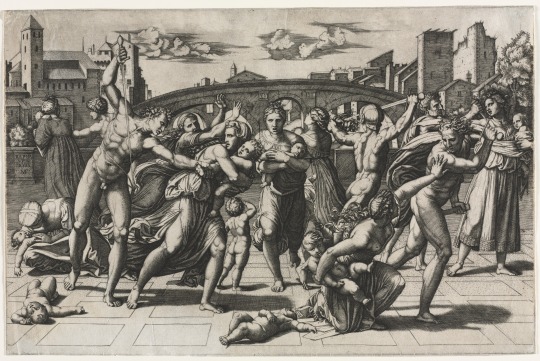
Palinuro de México (1977), es la segunda novela del escritor mexicano Fernando del Paso, una novela fragmentada, constituida por pequeñas historias que se formulan de maneras diversas y que existen en diferentes realidades. Fernando del Paso crea pequeños mundos, islas, que pueden definirse en sí mismas pero que están en constante diálogo entre ellas.
Aunque Palinuro de México es una lectura compleja estructuralmente, la novela es entendible y su lenguaje, a pesar de ser sintácticamente elaborado y claramente influenciado por el neobarroco, tiende a lo coloquial.
Fernando del Paso tiene un gran manejo del lenguaje. Logra crear el mundo a partir de un relato. Crea una fiesta temporal en su novela, convergiendo en esta personajes que existen en diferentes realidades geográficas, históricas y sociales; y que a pesar de estas diferencias, dialogan y se influyen mutuamente. Hay un juego ficcional que impide conciliar elementos reales e imaginarios, crea una dicotomía que divide lo real de lo imaginario, lo formal de lo lúdico, lo científico de lo mágico; sin embargo, estas oposiciones siempre están en contacto y se manifiestan incluso dentro de los personajes.
Palinuro de México podría considerarse como una Bildungsroman o novela de formación, definida como “El relato que aborda la peripecia de un personaje en su periplo hacia la edad adulta, subrayando todos aquellos episodios y pasajes que jalonan la progresiva construcción de su conciencia y de su identidad” (Escudero, 2007-08, p. 3). La novela se construye con Palinuro al centro pero tomando en cuenta también la globalidad de su vida familiar y su contexto histórico; en palabras de Lilian Bendayan, “A través de la reconstrucción del proceso global de su vida, la novela se construye alrededor de tres grandes secuencias: la infancia de Palinuro, su adolescencia y su trágica muerte.” (Bendayan, 1990, p. 11).
Siguiendo este esquema, Palinuro de México puede dividirse en tres partes. En la primera conoce a Estefanía, y adquiere por medio del tío Esteban su pasión por la medicina. La segunda parte lo desplaza a un cuarto en la Plaza de Santo Domingo, donde vive su amor con Estefanía. Aquí el personaje se desdobla en Palinuro personaje y en Palinuro narrador. El narrador profesa, a la vez, su amor por Estefanía y su anhelo de ser médico, mientras que el personaje, vive sin inhibiciones y se interesa y participa en las protestas de los estudiantes. Finalmente, la tercera se conecta con el contexto político-social de la época y lleva a la muerte de Palinuro en el contexto del movimiento estudiantil de 1968.
Esta novela se desarrolla dentro de dos mundos: el real y el imaginario. En el imaginario tiene como eje central la figura de Estefanía y el amor que le profesa; por otro lado, en el mundo real están la medicina y la historia familiar de Palinuro. En este plano es donde Fernando del Paso, introduce paulatinamente los intereses y la preocupación de Palinuro por la lucha de los estudiantes y su apoyo para ellos.
Entre los temas que más resaltan dentro de la novela, es la representación que hace del Paso de uno de los movimientos más significativos para nuestro país: el movimiento estudiantil de 1968. Podemos encontrar en Palinuro el espíritu estudiantil de la época, con la vitalidad de la juventud, las ganas de un mejor futuro, la necesidad de justicia. Del Paso dejó una nueva versión de los hechos. La masacre de Tlatelolco es un factor determinante en ella a pesar de que solo se le da un capítulo en concreto a lo largo de la novela. El protagonista hace numerosas referencias a los episodios de huelga. Así como a las injusticias que cometían el gobierno y las fuerzas armadas en contra de los estudiantes. Palinuro es uno de los tantos estudiantes que perdieron la voz durante ese periodo.
Volviendo a la relación entre el mundo real y el imaginario, es en esta tercera parte, en el capítulo “Palinuro en la escalera o el arte de la comedia”, donde se ubica a la novela dentro del movimiento político de finales de los 60. Y aunque Palinuro también pertenece al movimiento del 68, es el primo Walter quien reflexiona directamente al respecto de la causa del problema: “¿Cómo es posible, por ejemplo, que los periódicos digan «el cadáver del estudiante fue encontrado en una zanja», […] como si su cuerpo fuera un objeto (y sin embargo es un objeto, un montón de objetos) para llevárselo en brazos, si está muerto, o ayudarlo a volver a la vida, a caminar y a soñar, si está vivo?” (Del Paso, 2013, p. 515).
Palinuro fue escrito y concebido en medio de un país lastimado por su gobierno, un país que masacró y censuró a sus universitarios. Como protagonista, Palinuro representa a los estudiantes que se quedaron sin voz y sin rostro, sin ser más que un cuerpo sin reconocer. Palinuro es uno de los estudiantes que lucharon por sus ideales, que sufrieron los ataques y que padecieron las innumerables injusticias del gobierno de Gustavo Díaz Ordaz, reclama que sólo hay libertad para explotar al pueblo y para crear monopolios: “¡Claro que sabemos que hay libertad! ¡Libertad para crear sindicatos blancos! ¡Libertad para explotar al pueblo! ¡Libertad para crear monopolios!” (Del Paso, 2013, p. 590). Es uno de los estudiantes que perdieron la vida el 2 de octubre de 1968.
Es interesante cómo Fernando del Paso recrea esta matanza y representa en su personaje a todo un colectivo. “Palinuro en la escalera o el arte de la comedia”, se presenta a manera de obra de teatro dividida en cuatro partes, una por cada piso superado, que son, a la vez, cada parte de la historia que nos cuenta Palinuro: describe cómo se infiltraron personas ajenas al movimiento, la represión, la confusión y la falta de organización que condujeron a la tragedia del 2 de octubre.
A pesar de describir visceralmente los acontecimientos, Del Paso logra hacer humor dentro de la tragedia, este capítulo es uno de los más significativos para la novela, pues relata la muerte de Palinuro, y a pesar de ver el sufrimiento del protagonista, también vemos la parte cómica, que refleja que el mundo sigue su curso y no se detiene por nada. Igualmente, en este capítulo se nota el contraste entre Palinuro y Estefanía, pues mientras él sufre por llegar a su piso y narra todo lo que sucedió, Estefanía ríe por la gran noche que pasó.
Por esto, este es uno de los capítulos más crudos y realistas de la novela, que contrasta con lo lúdico del resto. Donde las acotaciones y el personaje de la Muerte Ropavejero nos van adentrando en la tragedia. El personaje de la Muerte nos explica qué fue lo que pasó en el conflicto estudiantil y nos invita a ser personajes de la obra, con la única exigencia de conocer el argumento.
Pocas novelas mexicanas están tan relacionadas con este evento histórico como Palinuro de México, una sátira que crítica y se burla de la sociedad de la época y del gobierno opresor. Una sátira de un episodio histórico que pareciera muy lejano, pero no lo es.
Incluso desde su protagonista, Palinuro de México es una novela polifónica: habla la voz de un joven estudiante de medicina, también la de un joven admirador, soñador y enamorado; pero, sobre todo, la de un joven crítico y políticamente consciente.
Palinuro representa a aquellos jóvenes con ganas de justicia. La represión del movimiento estudiantil de 1968 generó una enorme reacción, y debido a la censura, fueron varios los escritores que encontraron en la literatura una manera de manifestarse y no dejar que esa fatídica noche quedara en el olvido.
“2 de octubre no se olvida” es el tan conocido lema que se usa para recordar a los estudiantes que perdieron la vida, a un pueblo que tiene memoria. El caso específico del joven Palinuro nos recuerda que cualquiera puede tener el mismo final; por eso no solo es una representación de lo que fuimos, sino de lo que somos, de lo que seremos y de lo que pudimos haber sido.
_______________________________________________________________
Bendayan, Lilian. (1990) Palinuro de México: Fernando del Paso. Caracas: Equinoccio / Universidad Simón Bolívar.
Del Paso, Fernando. (2013) Palinuro de México. México: FCE.
Escudero Prieto, Víctor. (2007-2008) Reflexiones sobre el sujeto en el primer Bildungsroman, Departamento de Filología Románica Universitat de Barcelona.
5 notes
·
View notes
Photo

"Yo sé que un día de estos todos vamos a reventar". . . ¡ESTRENA! @capitalderiesgo MARTES DE FEBRERO / 20:00hrs. @un_teatro_ / Nuevo León #46, Col. Condesa . . "Capital De Riesgo" Escrita por José Alberto Gallardo (@hombrebreve) Dirigida por Julio César Luna (@juliocesarlunaf) Con: Édgar de los Santos (@edgagar) Estefanía Jiménez (@estefjp) ATA (@ata_destino *Gabriela Castillejos (@gabycastillejos_) / 5 y 19 de febrero *María Syrenna (@syrenna) / 12 y 26 de febrero ATA (@ata_destino) . *Alternan . . . ¡Los esperamos! ⚡ . . . #Actriz #ActrizMexicana #Teatro #Estreno #Temporada #AlgoMásHumano #UnTeatro #CapitalDeRiesgo #Actress #MexicanActress #Theater #Opening #Instagrammer (en Un Teatro) https://www.instagram.com/p/Bs859s5FnZz/?utm_source=ig_tumblr_share&igshid=12zbnjsizgt0i
#46#actriz#actrizmexicana#teatro#estreno#temporada#algomáshumano#unteatro#capitalderiesgo#actress#mexicanactress#theater#opening#instagrammer
1 note
·
View note